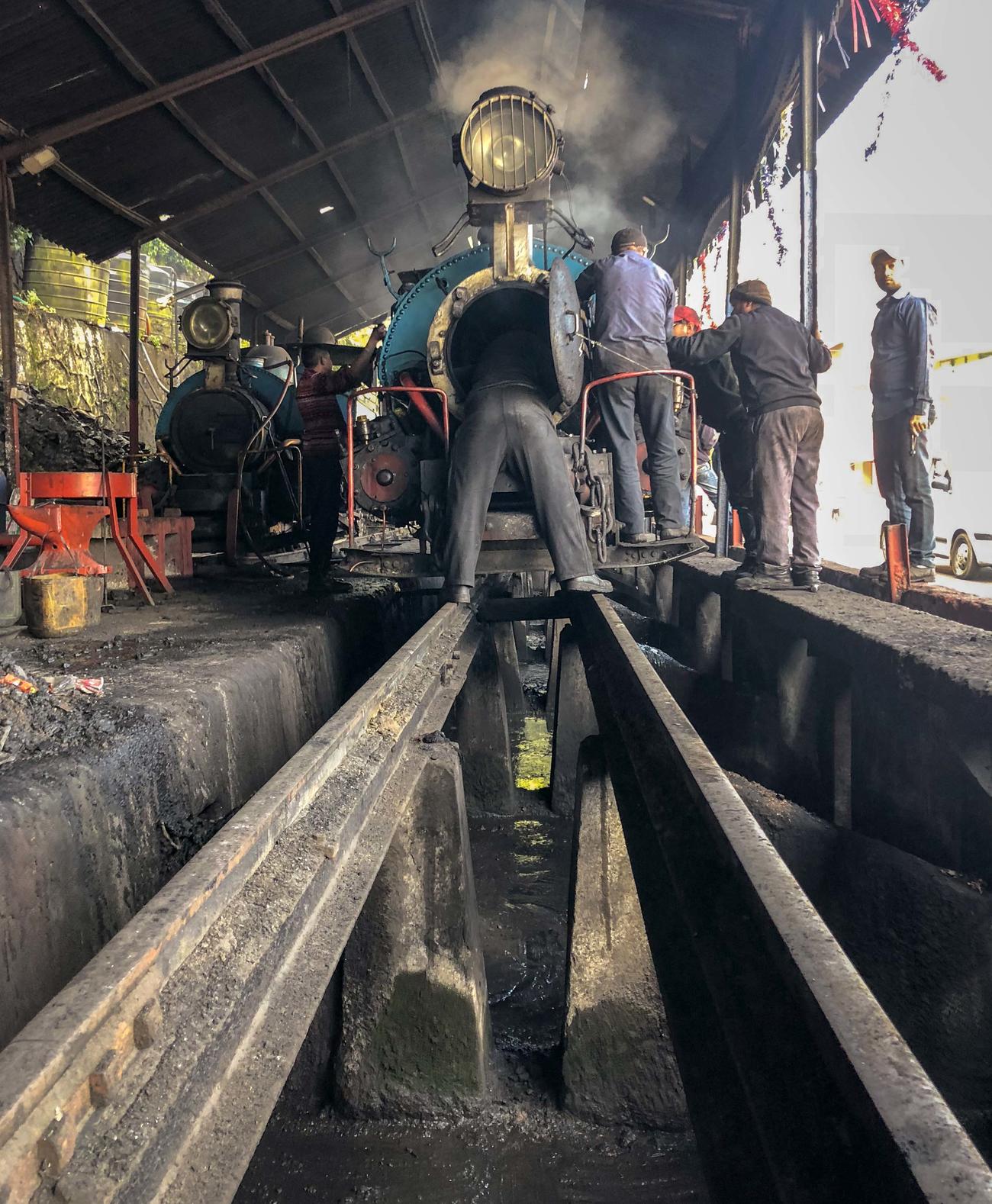Two Feet. It’s not far. The distance between your eyes and the screen you’re reading this is probably less. Two feet or 610mm is the distance between the rails, that is the gauge, of the Darjeeling Himalayan Railway, also known as the DHR.
This railway was completed back in 1881 as a vital link between the tea gardens of Darjeeling and shipment from Calcutta. Before then the only way to get the tea down from the high plantations to the nearest shipping post was along Hill Cart Road, which was far from swift.
Darjeeling Himalayan Railway continues to run today, but no longer carries tea down. Several of the locomotives are steam, others are diesel.
On the third day of our trip to Sikkim and West Bengal, we had the luxury of riding on this train, which was the second railway in the world to be given UNESCO World Heritage Site status for its contribution to the development of a region.
We arrived at the terminus of the line in Darjeeling shortly after 9am and wandered around the station. Apart from the terrific views of Kanchenjunga, the third highest peak in the world, we were drawn to the ‘Loco Shed’ where at least eight engineers were working on a steam engine. One of them was inside the front of the train, just his legs sticking out the front. Others were there to provide the right tools and get greased up and involved themselves.
This steam engine was due to depart before us but was particularly hard to fix. Eventually, they managed to make it work and with a great plume of smoke that filled the shed the steam engine was fixed and got going.
The old locomotive picked up its carriages and set off up the hill to Ghum before our diesel-powered train got going behind it.

The DHR sounds similar to the DLR (Docklands Light Railway) which operates close to my home in London but the two could not be much more different. The DHR is old, almost antiquated, with wonderful views of the mountains, while the DLR is modern, automated, and faceless as it purrs through east London.
The steam locomotive before us on the DHR didn’t quite have the poke needed to get its carriages up the hill so soon enough our diesel train caught up with it and pushed it along these narrow tracks. It felt very much like an episode of Thomas the Tank Engine.
Darjeeling Himalayan Railway needs to be experienced to be understood. It is a true colonial legacy, still chugging away on these rickety narrow-gauge tracks, that seem to cross the busy road without any level crossing every couple of minutes. Indeed, it crossed Hill Cart Road over 150 times in its 88km route.
Eventually, with a bit of assistance both the diesel train and the steam train managed to make it to Ghum, which is the highest point of the railway, home to a museum about DHR, and near a wonderful monastery we visited after.
The journey on the Darjeeling Himalayan Railway is hard to explain but it was a truly wonderful experience and a great way to properly start this trip. I’ve never called myself a trainspotter, nor got excited by trains, until this journey up to Ghum, pushing a steam train slowly forward. The smoke billowing out, the mountains in the distance and the history all combined in one.
Mark Twain shared my enjoyment of it when he visited Darjeeling in 1896. “It is the most enjoyable day I have spent on earth,” he reportedly said afterward.
Who knew train journeys on those old rails just two feet apart could be so enthralling?
